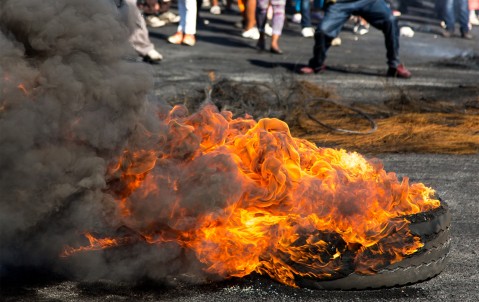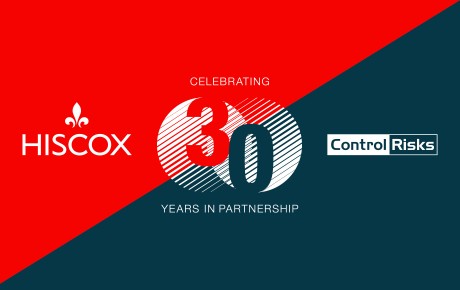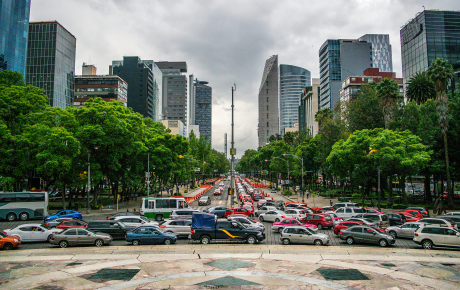
In the aftermath of the South African violence
Although order has been re-established, the grievances that triggered the violence remain, meaning the risk will remain– just like many others around the world. July’s rioting in South Africa vividly illustrates the challenges facing the political violence insurance market in predicting where costly outbreaks of disorder may occur next in a world struggling to recover from the ravages of Covid.
The nine days of violence in South Africa bear similar hallmarks to the unrest that swept through North African countries in the Arab Spring, rioting in Chile in 2019 and unrest in Colombia in May this year, when spontaneous protests triggered disorder, from which the political violence insurance market collectively had billions of dollars of claims
In many countries, simmering political and social tensions are now threatening to boil over again as restrictions ease. The pandemic has become a new trigger for civil unrest, worsening existing economic and social fault lines that triggered unrest in 2019 in countries including Algeria, Bolivia, Chile, Ecuador, China, France, Spain, Venezuela, the UK, Lebanon, Iran, Iraq, and the US.
As a result, political violence underwriters are left wondering where next in the world trouble will flare. “Although it has deep economic and social problems, few political violence experts would have predicted South Africa to be the next flashpoint,” says Omar Zeineldine, Head of Specialty Lines, Middle East and Africa, at Hiscox London Market.
The worst civil unrest the country has witnessed since the end of apartheid was only quelled when thousands of soldiers were sent onto the streets to restore order, but not before 200 people were killed, and widespread damage was caused across KwaZulu-Natal and Gauteng provinces. “Rioters targeted high-profile industries, such as retail, causing severe damage to shopping malls, medium sized stores and banks. But they also attacked manufacturing, logistics and heavy industry, causing significant losses there too,” Zeineldine adds.
“Rioters targeted high-profile industries, such as retail, causing severe damage to shopping malls, medium sized stores and banks. But they also attacked manufacturing, logistics and heavy industry, causing significant losses there too,” Zeineldine adds.
While the final cost of the South African unrest is still unknown, it has been reported that the unrest could cost the global insurance market as much as $2.6 billion. Lloyd’s reinsures SASRIA, the South African pool which insures property damage resulting from civil disorder, as well as the business interruption cover that SASRIA also offers.
“There’s still a long way to go before all the business interruption and contingent business interruption claims are adjusted, but we’re looking at a sizeable loss for the political violence market,” says Zeineldine.
Inequality breeds discontent
South Africa’s unrest illustrates how a combination of isolated events can cause a tinderbox to ignite. The jailing of former President Jacob Zuma caused thousands of his supporters to take to the streets in protests that quickly degenerated into opportunistic looting and arson. But the roots of the disorder go much deeper.
South Africa has one of the highest levels of income inequality in the world, with aroundhalf the adult population living below the poverty line, according to government figures. Its economy was hit hard by Covid, with unemployment rising to over a third of the workforce by the middle of this year, while rising inflation is eating further into people’s wages. The country has struggled with successive waves of the virus, with around 15% of its 60 million population fully vaccinated.
As in other countries, the underlying resentments that triggered the South African violence – poverty, inequality, discrimination, poor public services, political corruption, and democratic alienation – have been exacerbated by the government’s handling of the virus and its devastating economic fallout.
“The factors that triggered the unrest will not go away, and experience has proven that small sparks can reignite the violence. For the political violence market, each new event provides new insight into what is a constantly evolving risk, but the priority remains helping our customers that are affected whenever and wherever political and social unrest breaks out,” Zeineldine concludes.
“The factors that triggered the unrest will not go away, and experience has proven that small sparks can reignite the violence. For the political violence market, each new event provides new insight into what is a constantly evolving risk, but the priority remains helping our customers that are affected whenever and wherever political and social unrest breaks out,” Zeineldine concludes.




